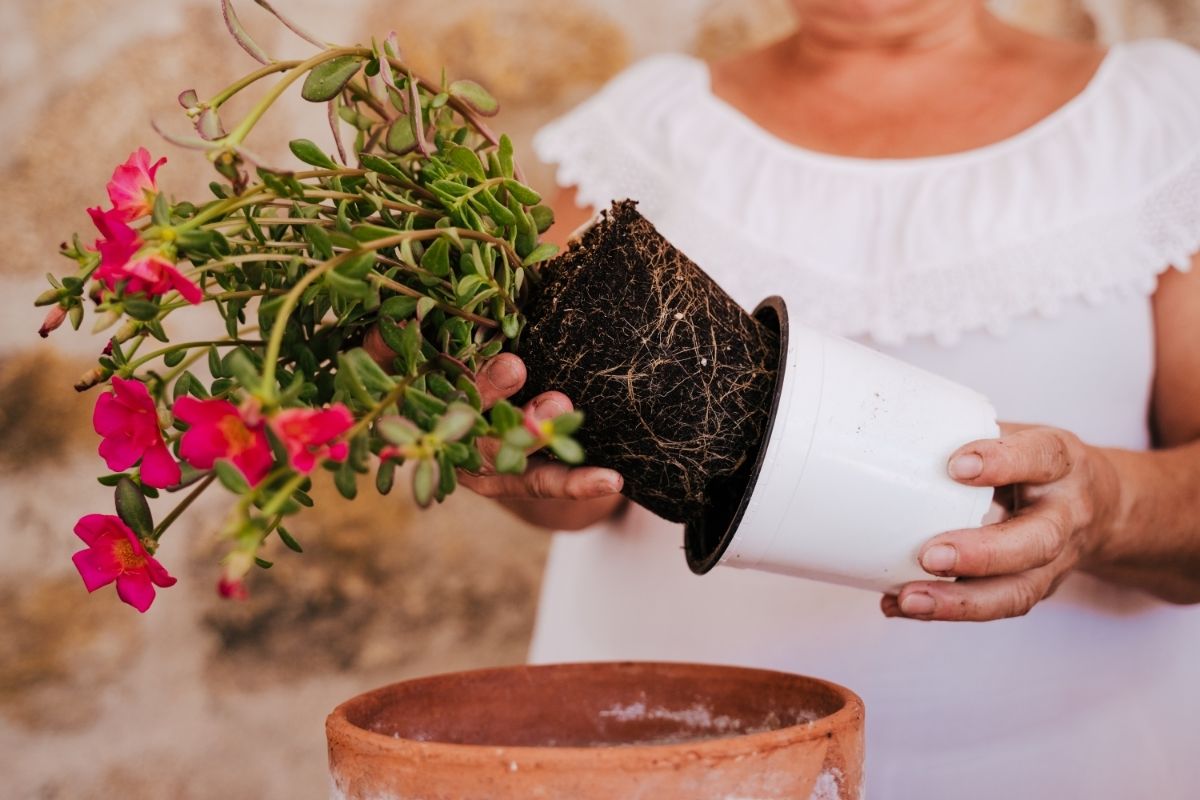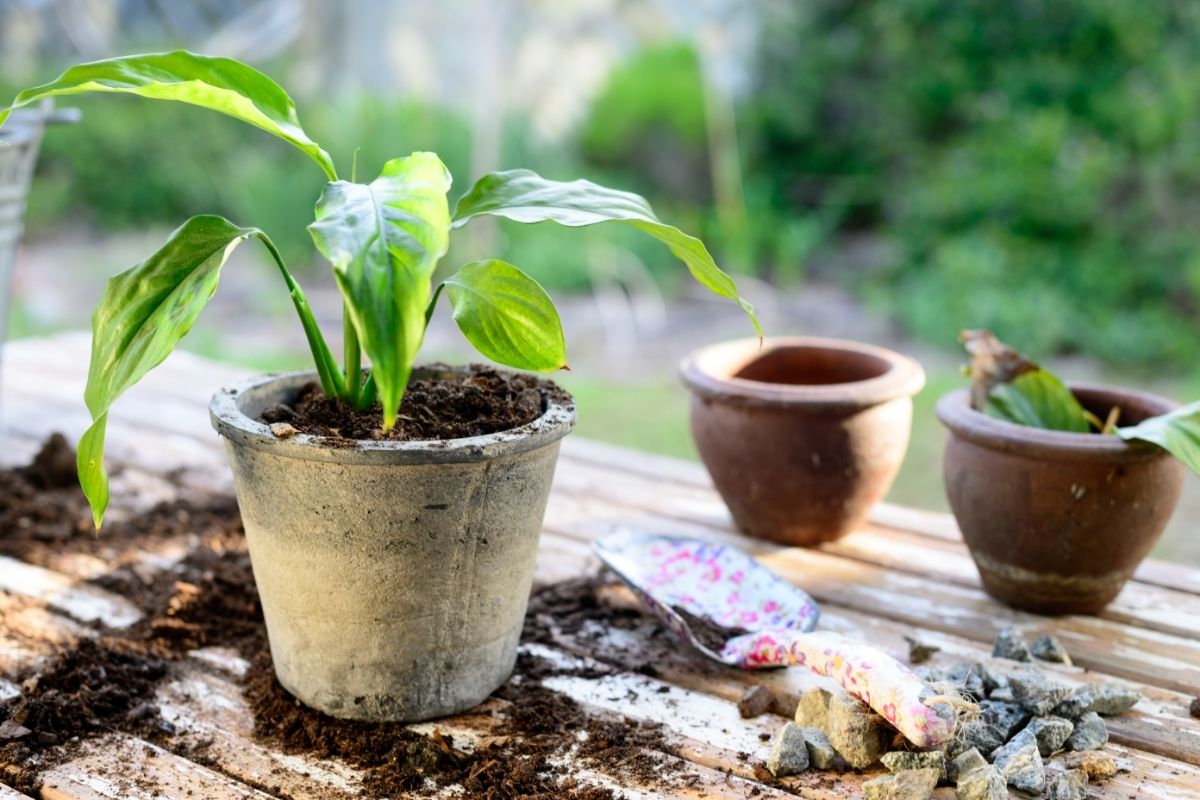When it comes to taking care of our plants, there are a number of tasks we have to complete. If you are someone with a natural green thumb then this might be easy for you. However, sometimes we can forget even the smallest tasks like how to repot your plants.
Repotting your plants is an important process. It helps you to make sure your plants are healthy and stay healthy. There are many reasons as to why you should re-pot your plant. The essential thing is that there will be a time when you should repot your plant.
So, when that time comes, how do you repot your plants? If you don’t know the answer to this question, then don’t panic. We are here to walk you through what to do so you can repot your plant with ease.

What Is Repotting?
First things first, let’s talk about what exactly is repotting. Repotting is the act of moving your plant from one pot or container to another. However, repotting your plant is not just about moving your plant into a different pot. It can also be about changing the soil your plants are in.
Related: How To Get Rid Of Water Bugs In Your Home For Good? The Ultimate Guide
Why Should You Repot Your Plants?
Now that we’ve talked about what repotting is, let’s talk about why you need to repot your plants in the first place. Well, if you want your plants to grow well, then they need to be taken out of their current pots and put into new ones.
This is because the soil in your old pots may not be good enough for them anymore. So since there are a few reasons as to why you should repot your plants, let us have a look at them in detail.
Nutrients
You see, the nutrients of the soil in your pots have been used up over time. As your plant grows, it needs more nutrients than the soil in your pots provides.
So, when your plant reaches its full size, the soil in your pot won’t be able to provide all the nutrients your plant needs. That means your plant will start to wither away.
Give Your Plants More Room
Another reason to repot your plants is that they are growing too big for their pots. As your plants get bigger, they take up more space in their pots. Since your pots aren’t large enough to hold your plants, they end up crowding each other.
This makes your plants’ roots unable to breathe properly. This leads to root rot and other health issues.
Diving The Plant
Something you can do with plants that are large is to divide them up. You can divide the roots up and create smaller plants out of this large one. To do this, you would need to repot the plants.
Updating Your Decor
Whilst this one may not be to help the plants, this reason helps you. If you want to change the style of decor in your house, sometimes you need to change the pots you keep the plants in. So, this is where repotting comes in handy.
If you want your plant to continue growing healthily, then you need to take action. By repotting your plant, you ensure that you give it the best possible environment to thrive in. In addition, you’ll also save yourself some money by replacing your plant’s pot.
Related: How To Get Rid Of Whiteflies On Houseplants For Good?
How Do I Repot My Plant?

Alright, now that we’ve covered what repotting is and why you should repot your plants, let’s get down to business. How do you repot your plant? Well, the process is pretty simple. All you need to do is follow these steps:
Step One
The first step you need to take when repotting your plant involves removing the plant from its current pot. Take care to remove the plant carefully.
Don’t pull on the plant itself. Instead, carefully hit the bottom of the plant pot until the plant starts to slip out of it. Once the plant starts to slip out, you can lift the plant out of the pot from the stem if it isn’t sliding out of the plant all the way.
Step Two
Once you’ve removed the plant from its pot, you need to start to loosen the roots. Start by pulling gently on the base of the plant. This allows you to loosen the roots so that you can easily move them around.
If you have lots of small roots, some of these will be fine to remove, though it is important that you leave any thicker and larger roots.
Step Three
Now that you’ve loosened the roots of the plant, you can start to replace the old mixture you had in your pot. Some of this mixture would have fallen loose as you started to loosen the roots. You don’t want to remove all the old soil in the pot, only remove about 1/3 of the soil mixture.
Step Four
Next, you need to add the new soil mixture into the new pot. Make sure you use a good quality potting mix. When you place the new soil into the pot you want to press down on it to make sure it is compacted, so there are no air pockets.
It is best to use a planter that has a drainage system but not all planters do. If your new planter doesn’t have a drainage system you can put down gravel or even rocks at the bottom of the planter before you put the soil in the plant pot. This works well for hanging plant pots.
Step Five
Now it is time to add your plant. Add the plant into the pot and push the soil down firmly around the root ball. Then you should add some more soil to make sure that the plant is secure in the pot. Don’t compact too much soil, as this can cause drainage issues.
Step Six
Finally, water your plant thoroughly. Watering your plant after you repot it ensures that the soil stays moist and healthy. It is a good idea to water your plant every day, especially during hot weather.
Frequently Asked Questions
If you’re still wondering how to repot your plant, here are some frequently asked questions.
What Is The Best Time To Repot A Plant?
While there is no set rule, most people repot their plants between two and four times per year. Although, you may choose to repot your plant when it outgrows the pot it is in.
As long as you keep up with watering, fertilizing, and pruning your plant, then you shouldn’t have any problems keeping your plant healthy.
How Long Does It Take For My Plants To Grow Again After I Repot Them?
This depends on what kind of plant you have and how big it was before you repotted it. Generally speaking, it takes anywhere from one week to two weeks for plants to fully recover from being repotted.
However, if you were repotting because the plant was growing poorly, then you may see an improvement in growth within just a few days.
It is worth noting that repotting your plant can be stressful for your plant.
Can I Reuse The Soil When Repotting?
Yes, you can reuse the same soil when repotting. Just make sure that you clean out any dirt or debris that might have been left behind.
Using the same soil is completely fine as long as the soil is free of anything that can harm the plant. You should consider whether this soil has enough nutrients to sustain your plant before choosing to reuse it.
Final Thoughts
Repotting your plants is a great way to ensure they stay healthy. By repotting your plants regularly, you will help them grow better and live longer. There are many ways to repot your plants, but the method described above is probably the easiest and safest.
Hopefully, this article helped answer your question about how to repot your plants! Please share this guide with anyone who needs it. Thank you for reading!







